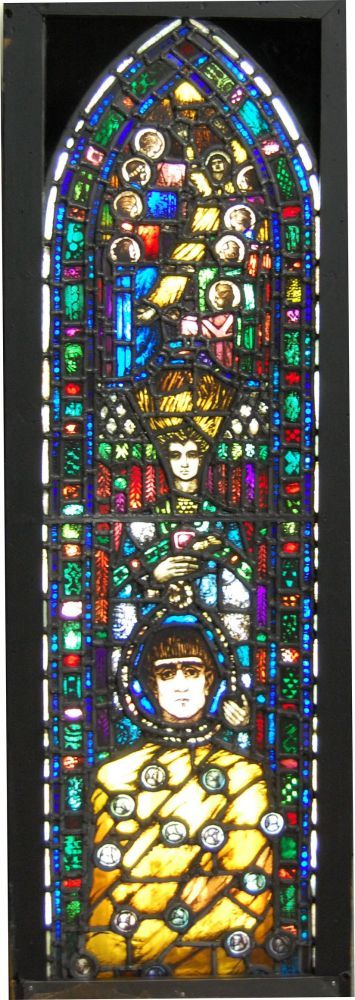 Stained Glass Conservation
Stained Glass Conservation
The conservation of stained glass is a fascinating area of interest. There is a story behind every stained glass window, a history involving a client, an artist, and usually an event. It is the job of the stained glass conservator to preserve the material of a stained glass window just as it was intended, in order that a community, and a nation may continue to cherish their past.
Some stained glass windows celebrate joyous occasion, other stained glass windows the passing of a loved one. Some describe a biblical passage, while others simply exist to contribute to the atmosphere of a sacred space.
Ireland has some of the most beautiful stained glass in Europe, a fact not often appreciated. In any parish one could find the stained glass works of famous Irish artists like Harry Clarke, Michael Healy, or Eve Hone. And perhaps in the same church, stained glass windows commissioned by Augustus Pugin or from famous studios like William Morris, Warrington, Powell’s, Williment, Clayton and Bell or the tried and tested Mayer’s of Munich.
We pride ourselves in offering our clients the highest standard of stained glass conservation practiced on the island. In so doing we abide by the following standards of best practice:
Minimal intervention.
Some stained glass windows celebrate joyous occasion, other stained glass windows the passing of a loved one. Some describe a biblical passage, while others simply exist to contribute to the atmosphere of a sacred space.
Ireland has some of the most beautiful stained glass in Europe, a fact not often appreciated. In any parish one could find the stained glass works of famous Irish artists like Harry Clarke, Michael Healy, or Eve Hone. And perhaps in the same church, stained glass windows commissioned by Augustus Pugin or from famous studios like William Morris, Warrington, Powell’s, Williment, Clayton and Bell or the tried and tested Mayer’s of Munich.
We pride ourselves in offering our clients the highest standard of stained glass conservation practiced on the island. In so doing we abide by the following standards of best practice:
Minimal intervention.
We respect all aspects of the stained glass work of our predecessors, paint, glass, and lead. We intervene only when it is necessary to protect, or preserve a stained glass window, and where non-intervention would likely result in further damage to a stained glass window.
Maximum retention of original materials.
Maximum retention of original materials.
The basis for stained glass conservation is the belief that the original stained glass materials are important and thus worth the effort of conservation. We hold that best practice in stained glass requires that where possible, and when practical, all the original materials of a stained glass window are retained.
Documentation.
Documentation.
All our stained glass conservation work is documented in writing and with photographs. The format of this documentation varies on the needs of the client. Basically, it is important to have before and after photographs of the stained glass with a description of the damage to the stained glass window before any conservation is undertaken. Further, it is important to specify what corrective stained glass conservation measures will be employed.
Reversibility.
Reversibility.
It is very important that stained glass conservation steps can be reversed if necessary. There are several reasons why it may be necessary to reverse previous work. Therefore the methods used need to be capable of reversing without posing a danger to the original materials.
Our goal is to be the best practitioners of stained glass conservation on the Island. We respect the hand of the artists and craftsmen that have gone before us and hope to preserve the stained glass entrusted to us for future generations to enjoy.
If you are responsible for the care of stained glass, then we look forward to serving you.
Our goal is to be the best practitioners of stained glass conservation on the Island. We respect the hand of the artists and craftsmen that have gone before us and hope to preserve the stained glass entrusted to us for future generations to enjoy.
If you are responsible for the care of stained glass, then we look forward to serving you.
